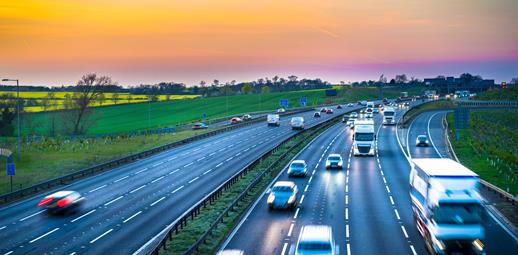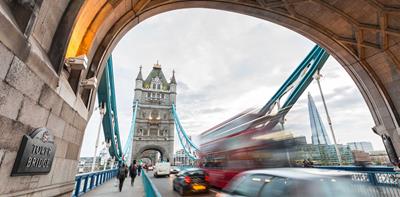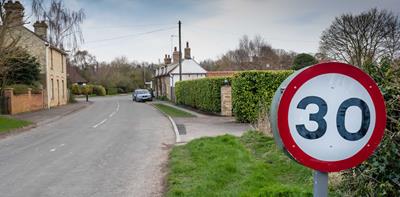
The thought of driving on a busy motorway can be daunting for some drivers.
In fact, according to research from the RAC, around eight million drivers (one in five) hardly ever drive on the motorway and around 380,000 never do.
Contrary to popular belief, motorways are actually among the safest roads to drive on. Tackling them just requires some knowledge and preparation.
Take someone with you
If you’re nervous about driving on a motorway, then consider taking another experienced driver with you on those first few motorway journeys. If nothing else, they might be able to help keep you calm, and this can be especially useful if you’re a new driver.
You can take other simple steps to gradually build your confidence on a motorway. For example, start with a quieter stretch of road. Taking on the M25 at rush hour probably isn’t the best place to start. Also, while you’re building your confidence and experience, you could stick to daytime driving on motorways and avoid joining them when the weather is particularly nasty.
Plan ahead
Prepare yourself and your car for every journey, including on motorways. That includes ensuring your car is in good condition and fuelled up before you head off, as a bit of preparation can help reduce your anxiety.
Plan your route, including knowing which exit you need to leave the motorway on. Even if you’re likely to be using a satnav, this may not always give you enough warning of your exit. Sometimes, in heavy traffic, you need to start thinking about moving over into the correct lane well in advance of the upcoming junction. If you do miss your exit, drive on to the next one rather than attempting to cross the hatched markings.
Joining a motorway
Joining a busy motorway can be particularly stressful for some drivers. Here are some pointers on how to do it safely:
- As you approach the motorway on the slip road, check your mirrors and your blind spot for a safe gap in the traffic.
- Signal, so other motorway users know you intend to join the motorway traffic.
- Give way to traffic already on the motorway.
- If the traffic is heavy, then be prepared to slow down, so you can spend more time searching for a gap.
Use your mirrors
When driving on a motorway, you should be checking your mirrors frequently.
Before overtaking or changing lanes, remember to check your blind spot too. Equally, be careful to stay out of other drivers’ blind spots, especially large vehicles like lorries.
Keep your distance
Always make sure you leave enough distance between your car and the vehicle in front, so that you can stop safely if you have to.
According to the RAC, this gap should equate to at least four car lengths when travelling at motorway speed
Watch your speed
It’s easy to put your foot down to keep pace with other drivers on the motorway and gradually creep over the 70mph speed limit.
In 2017, nearly half (48%) of cars exceeded the limit on motorways, according to figures from the Department for Transport.
As well as being incredibly dangerous, exceeding the limit won’t save you that much time either. Based on research showing that the vast majority (88%) of motorway trips are less than 50 miles, Edinburgh Napier University calculated that driving continuously at 80mph instead of 70mph, would only save about five minutes.
Remember good lane discipline
If you’re nervous about changing lanes on motorways, it can be tempting to move into the middle lane and stay there. But this can be dangerous, as well as frustrating to other road users. In short, you need to stay in the left lane, except when overtaking.
The Highway Code is clear on the importance of good lane discipline. It says: “You should always drive in the left-hand lane when the road ahead is clear. If you are overtaking a number of slower-moving vehicles, you should return to the left-hand lane as soon as you are safely past. Slow-moving or speed-restricted vehicles should always remain in the left-hand lane of the carriageway unless overtaking.”
In 2013, new laws were introduced to give police officers the power to hand out on-the-spot fines of £100 and three penalty points to drivers who are middle lane hogging.
If you break down
- Having problems with your car is never nice and even less so when you’re on a motorway. If it does happen, it’s important you know how to respond: pull over safely, with your hazard lights on.
- Get out of your car, using the doors nearest to the verge, and stay behind the barrier.
- Phone for help, either using your mobile or one of the emergency phones.
- After making the call, make sure you stay behind the barrier while you wait for help, staying well away from the traffic.
See our guide to what to do if you breakdown on a motorway
for more detail on what to do.
Know the rules on smart motorways
Smart motorways use technology to reduce congestion and improve road safety. One of the main ways they do this is by using varying speed limits across lanes. The limits are shown on signs above each lane, so be vigilant.
Another key feature is the use of the hard shoulder as an extra lane, either during busy times or to allow emergency vehicles through. The hard shoulder may even be used as a lane permanently on some smart motorways, which is known as ‘all-lane running’.
Look out for a red X sign showing when a lane is closed and can’t be used. Also look out for warning signs to alert you to traffic jams and hazards up ahead.
No £25 admin fee
When you update your policy online, e.g. amend driver, address or car details.
Get some extra help
As of last year, learner drivers were allowed on motorways, partly in order to train them on how to use lanes correctly.
For extra help, there’s the Pass Plus course, which offers motorway driving and may also help with lowering your car insurance costs. The course fee is usually around £200.
Other options include short courses focused entirely on motorway driving offered by IAM RoadSmart.
Don’t unnecessarily avoid motorways
If you tend to avoid motorways because you think they’re particularly dangerous, know that this isn’t necessarily true.
In fact, motorways are safer than many people realise. As they’re well-designed and engineered to handle fast-moving traffic, they’re actually much safer than single carriageway A roads.
If you follow the steps above to boost your motorway driving confidence, motorways can be a quick, efficient and safe way of reaching your destination.


